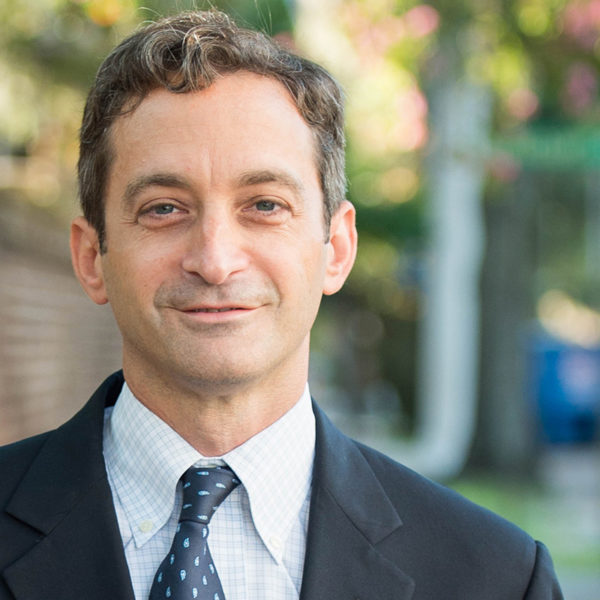How do ‘nature-based’ solutions protect coastal areas?
Last summer, the Army Corps of Engineers announced their proposal to construct a concrete seawall encircling much of the Downtown Peninsula of Charleston. In some spots, the wall would block the views of the iconic harbor, and a few neighborhoods on the peninsula were left out of the perimeter.

But at SELC’s request, another group of engineers starting looking at different solutions. Their ideas incorporated Charleston’s natural features like coastal marshes while, at the same time, literally recreating natural defenses as part of a broader plan to address all the ways the Downtown floods.
SELC and our partner, the Coastal Conservation League, submitted the proposal to the Corps on September 7th prior to a public-comment period that will last through October 25th. The proposal leans heavily on what coastal engineers call “nature-based” solutions. In some places, that could mean building an offshore breakwater designed to include natural systems, like marshes, to help buffer storm surge. In other places, the plan calls for berms covered in seagrasses that will be topped with park areas and promenades.
The bottom line is that we can’t keep destroying nature and replacing it with seawalls and sandbags.
Attorney Chris DeScherer
The idea, according to SELC attorney and South Carolina Office Director Chris DeScherer, is to use nature when possible to mitigate flooding. And in places where natural defenses have been lost, to engineer solutions that look like and act like natural features.
“Coastal wetlands and marshes do a pretty amazing job of controlling storm surge and other sources of flooding, but in cities like Charleston, many of those areas have been destroyed for development,” DeScherer said. “But that doesn’t mean we should give up and start building seawalls everywhere. We have other options to not only protect the Downtown from flooding, but to do so in a way that provides recreational opportunities and protects the views that make Charleston a world-famous destination.”
When engineers use the term “nature based,” there is no one definition that describes what they mean. Some groups, like the International Union for Conservation of Nature, describe the concept as using “natural or modified ecosystems” to also provide “human well-being and biodiversity benefits.” The Nature Conservancy talks about coastal solutions that “are supported by nature.” The Army Corps of Engineers defines it, in part, as “the intentional alignment of natural and engineering processes … to deliver economic, environmental and social benefits….”
Despite the Corps’ concrete-wall concept for Charleston, the federal agency has explored more natural solutions in other areas. After Superstorm Sandy devastated parts of Staten Island in New York in 2012, the Corps was tasked with building the Living Breakwaters project meant to mimic the kinds of vast oyster reefs that once protected the area.
That is the kind solution SELC is seeking for parts of the Charleston Peninsula.
“Charleston is a unique and historic city, and we will need a variety of solutions to address flooding from sea level rise and from storms made stronger by climate change,” DeScherer said. “In some cases, that does mean gray infrastructure, like the Battery seawall, but in other places, there are better and more natural solutions. The Corps is offering a one-size-fits all approach, and all we are saying is there are other options to explore that would offer flooding protection and other benefits for the city.”
Charleston has been a focus of SELC’s nature-based work because the city is among the East Coast’s most at-risk locations for sea level rise. But this work is also playing out in other SELC states.
In North Carolina, SELC attorney Kym Hunter has joined a task force in the Outer Banks to look at ways to better protect the lifeline of Highway 12 as the barrier islands shrink from erosion. Highway 12, the only road connecting the Outer Banks to the mainland, is routinely severed by coastal storms, trapping residents and visitors and cutting off aid and critical deliveries.
In Virginia, SELC attorney Morgan Butler has been helping to shape the Community Flood Preparedness Fund the General Assembly established last year to assist localities with flood resilience planning and projects. We are ensuring that the project selection process prioritizes proposals that use nature-based solutions, such as the acquisition and conservation of coastal wetlands and marsh migration corridors that are crucial for absorbing floodwater.
“The bottom line is that we can’t keep destroying nature and replacing it with seawalls and sandbags,” DeScherer said. “It is critical to protect our natural flooding defenses as the tides get higher and storms get stronger. And where those natural features are already lost or damaged, nature-based solutions will provide both flooding protection and added amenities for our communities.”
